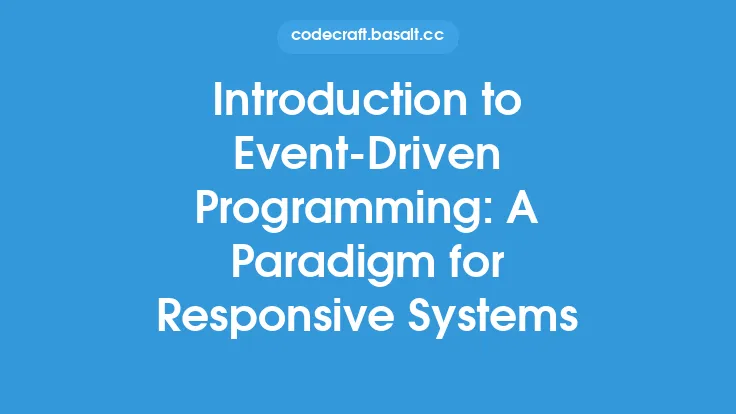Network programming is a crucial aspect of operating systems, enabling communication between devices over a network. At the heart of network programming lies the concept of sockets, which provide a way for devices to exchange data. In this article, we will delve into the world of network programming and sockets, exploring the fundamentals, types, and applications of sockets, as well as the protocols and APIs used to create and manage them.
What are Sockets?
A socket is a endpoint for communication between two devices (computer, phone, etc.) in a network. It is a combination of an IP address and a port number, which uniquely identifies a process or service running on a device. Sockets enable devices to communicate with each other, exchange data, and provide services over a network. They are the foundation of network programming, allowing developers to create distributed applications, client-server architectures, and peer-to-peer networks.
Types of Sockets
There are two primary types of sockets: connection-oriented and connectionless. Connection-oriented sockets, also known as TCP (Transmission Control Protocol) sockets, establish a dedicated connection between the client and server before data is sent. This ensures that data is delivered in the correct order and that there is no duplication or loss of data. Connectionless sockets, also known as UDP (User Datagram Protocol) sockets, do not establish a dedicated connection before sending data. Instead, they send data packets independently, which can result in faster transmission but may lead to data loss or duplication.
Socket Programming
Socket programming involves creating and managing sockets to enable communication between devices. This typically involves the following steps:
- Creating a socket: The socket is created using a specific protocol (e.g., TCP or UDP) and address family (e.g., IPv4 or IPv6).
- Binding the socket: The socket is bound to a specific address and port number, which uniquely identifies the process or service.
- Listening for connections: The socket listens for incoming connections from clients.
- Accepting connections: The socket accepts incoming connections and establishes a new socket for communication.
- Sending and receiving data: The socket sends and receives data using the established connection.
- Closing the socket: The socket is closed when communication is complete.
Socket APIs
Socket APIs (Application Programming Interfaces) provide a set of functions and libraries that enable developers to create and manage sockets. The most common socket APIs are:
- Berkeley sockets: A widely used socket API that provides a set of functions for creating and managing sockets.
- Winsock: A socket API for Windows that provides a set of functions for creating and managing sockets.
- POSIX sockets: A socket API that provides a set of functions for creating and managing sockets on POSIX-compliant systems.
Socket Protocols
Socket protocols define the rules and standards for communication between devices over a network. The most common socket protocols are:
- TCP (Transmission Control Protocol): A connection-oriented protocol that ensures reliable data transfer.
- UDP (User Datagram Protocol): A connectionless protocol that provides fast data transfer but may result in data loss or duplication.
- SCTP (Stream Control Transmission Protocol): A connection-oriented protocol that provides reliable data transfer and supports multiple streams.
Applications of Sockets
Sockets have a wide range of applications in network programming, including:
- Client-server architectures: Sockets enable communication between clients and servers, allowing for the creation of distributed applications.
- Peer-to-peer networks: Sockets enable devices to communicate directly with each other, allowing for the creation of peer-to-peer networks.
- Web development: Sockets are used in web development to create real-time web applications, such as chat apps and live updates.
- Game development: Sockets are used in game development to create multiplayer games, allowing for real-time communication between players.
Best Practices for Socket Programming
When working with sockets, it is essential to follow best practices to ensure reliable and efficient communication. Some best practices include:
- Handling errors: Sockets can encounter errors, such as connection timeouts or data loss. It is essential to handle these errors properly to ensure reliable communication.
- Using asynchronous programming: Asynchronous programming can improve the performance of socket-based applications by allowing for concurrent communication.
- Implementing security measures: Sockets can be vulnerable to security threats, such as data interception or eavesdropping. It is essential to implement security measures, such as encryption, to protect data.
Conclusion
In conclusion, network programming and sockets are fundamental concepts in operating systems, enabling communication between devices over a network. Understanding the fundamentals of sockets, including types, socket programming, socket APIs, and socket protocols, is essential for creating distributed applications, client-server architectures, and peer-to-peer networks. By following best practices and using sockets effectively, developers can create reliable, efficient, and secure networked applications.





